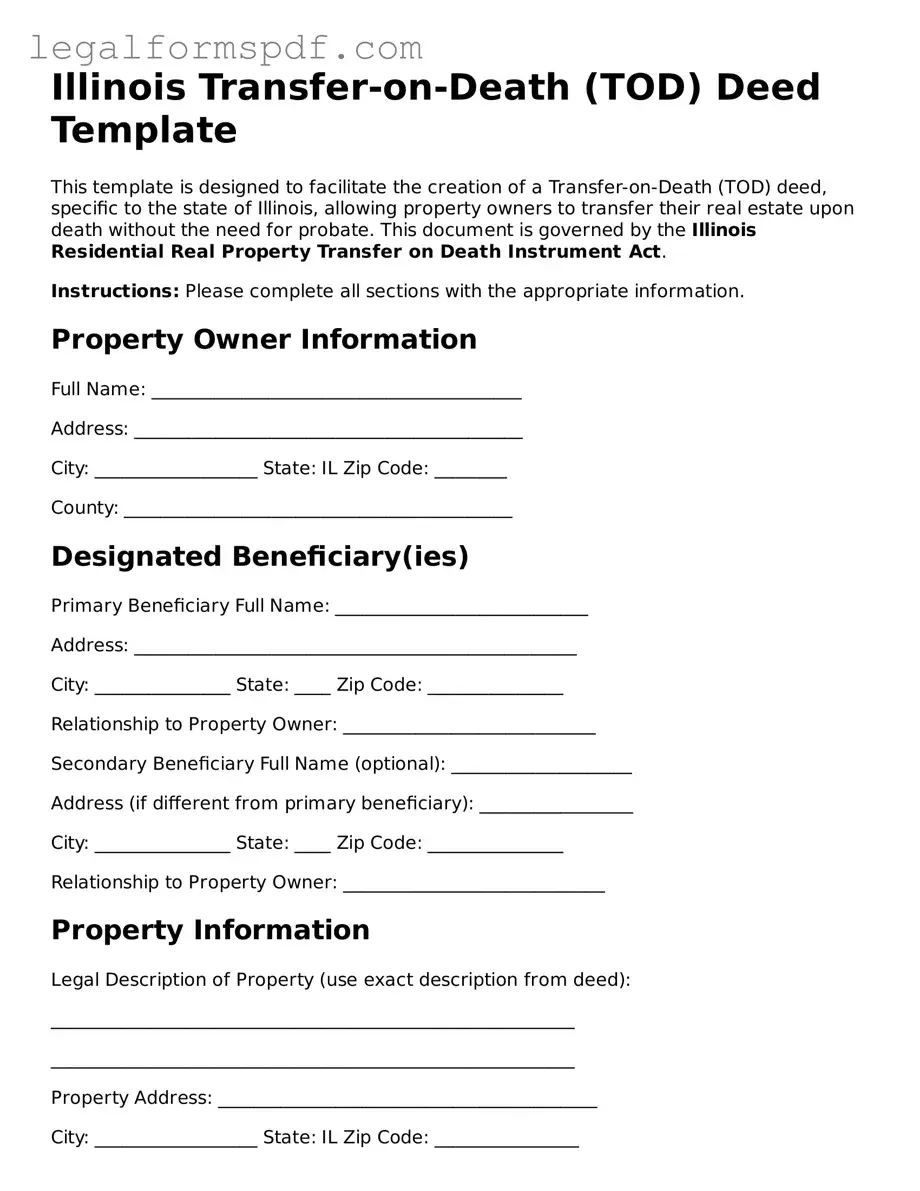Illinois Transfer-on-Death (TOD) Deed Template
This template is designed to facilitate the creation of a Transfer-on-Death (TOD) deed, specific to the state of Illinois, allowing property owners to transfer their real estate upon death without the need for probate. This document is governed by the Illinois Residential Real Property Transfer on Death Instrument Act.
Instructions: Please complete all sections with the appropriate information.
Property Owner Information
Full Name: _________________________________________
Address: ___________________________________________
City: __________________ State: IL Zip Code: ________
County: ___________________________________________
Designated Beneficiary(ies)
Primary Beneficiary Full Name: ____________________________
Address: _________________________________________________
City: _______________ State: ____ Zip Code: _______________
Relationship to Property Owner: ____________________________
Secondary Beneficiary Full Name (optional): ____________________
Address (if different from primary beneficiary): _________________
City: _______________ State: ____ Zip Code: _______________
Relationship to Property Owner: _____________________________
Property Information
Legal Description of Property (use exact description from deed):
__________________________________________________________
__________________________________________________________
Property Address: __________________________________________
City: __________________ State: IL Zip Code: ________________
Parcel Identification Number: _______________________________
Transfer Conditions
This transfer-on-death deed shall become effective upon the death of the named property owner(s) and shall transfer the described property to the designated beneficiary(ies) subject to all claims against the estate.
Signatures
To be valid, this deed must be signed by the property owner(s) in the presence of two witnesses and notarized. All parties must provide full legal names and signatures below.
Property Owner's Signature: ______________________ Date: ________
Witness 1 Signature: _____________________________ Date: ________
Witness 2 Signature: _____________________________ Date: ________
Notary Public Signature: __________________________ Date: ________
My commission expires: _____________________________
Note: After completion, this document must be filed with the county recorder's office in the county where the property is located before the death of the property owner.
